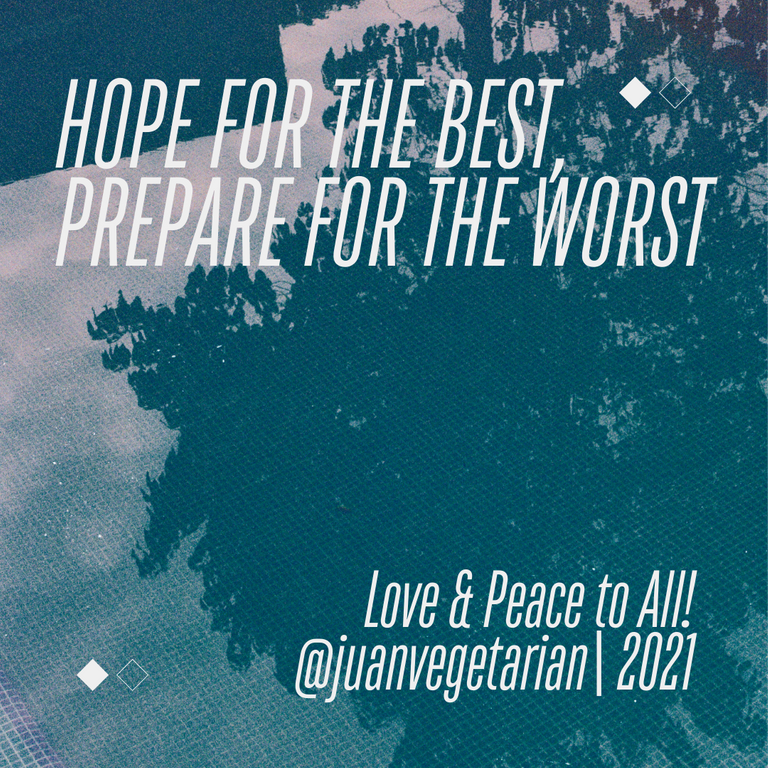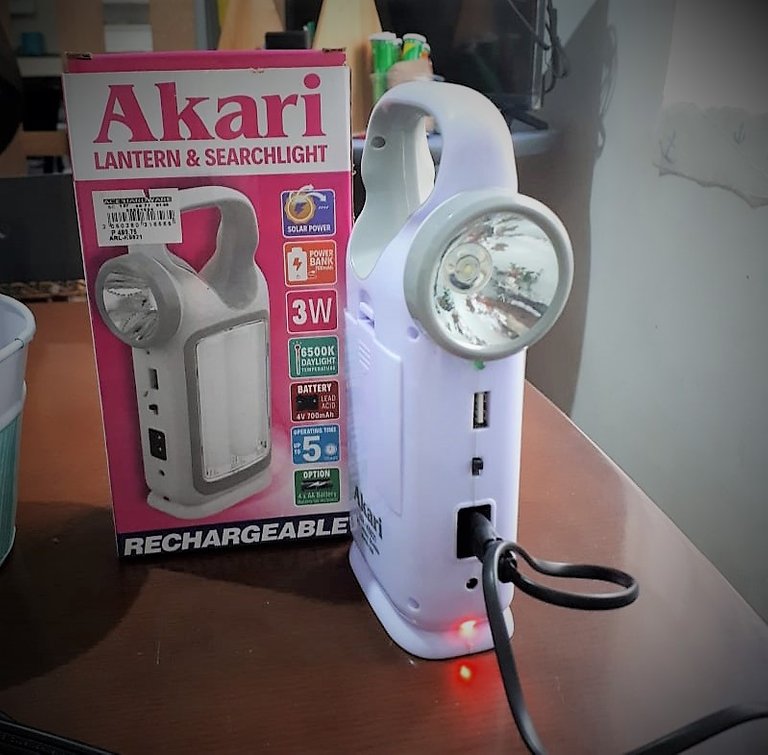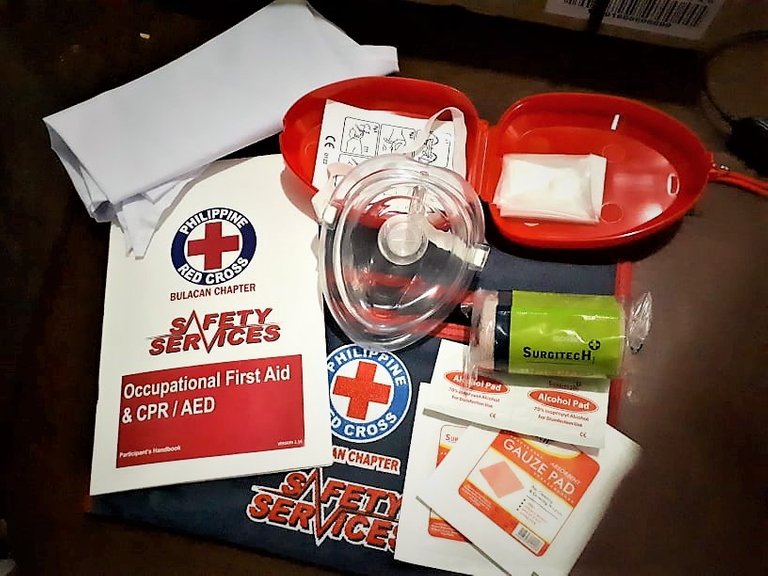A Super Typhoon Made Me Reflect About My Situation
DRRM (Disaster Risk Reduction Management) | A Personal Assessment and Initial Action Plan.

Odette Got Me Thinking...
In light of the recent events that had grabbed attention away from the ongoing pandemic, the chaos of the election campaign, and the various ills plaguing our nation, I thought about how I can best prepare myself and my family for a super typhoon, without being too paranoid and extremely fearful about something bad happening anytime soon.
In this scenario, I am only thinking about a super typhoon passing through my hometown and ravaging the area and not other calamities. Here goes...
Understandably, my thoughts turned to the basics: food, clothing, and shelter. How can I secure these things for me and my family and ensure that we have ample supply?
Food
This one should be simple enough but somehow I have not been able to do this correctly even after having experienced a few strong typhoons in my life. Buying enough food for a a few days is easy; buying for a disaster situation where there will be scarce supply and desperate buyers mean that a few weeks to a few months worth of supplies in the pantry is a must. The question now arises: what kind of food do I buy and how much of it is enough?
As it stands now, if a disaster were to hit today, we would have enough for around one to two weeks tops. For this, dried veggie products and canned goods will come in handy. Baked beans, for example, can be eaten immediately after opening since it is already cooked. The dried veggies will have more steps and will need more resources to be able to cook.
We have one extra tank of LPG that I can have refilled so that one, together with the one we are currently using, might already be enough to last for a few weeks/months. We don't have rice in stock, but I can stock up on that easily enough since it is a consumable item. I can just cook the ones I bought ahead: first in, first out. One hundred kilos might be good for starters: if we consume one kilo a day, then this will already be good for 100 days. We just have to be sensible and prudent in how it is consumed in a calamity situation.
Water is also included in this category and is a must for everyday living. We use it for cleaning the food we eat, bathing, cooking, drinking, et cetera. In short, we will die if we don't have water. We have ten pieces of 5-gallon slim containers that can be filled up. It can last us a few weeks if used only for drinking. We have a 55-gallon drum and various sizes of pails, pots, and pans that can be filled with water in case of an emergency. This can last a few days to a week if used wisely. Assuming that the water supply isn't cut off, this won't be a problem because we purify our own water with an ozonizer machine (*we have not bought water from the refilling station for a few years already using this handy device).
Shelter
Our house is sandwiched between two big houses. The left side neighbor has a second floor so this can serve as protection from strong winds in case of a super typhoon. The neighbor on the other side has a roof higher than ours, so this will also help protect our position from super strong winds. There is a mango tree in our backyard that also helps break the wind from that side of the perimeter while our front gate, garage and the wall in front of our house is higher than the top of our roof.
I can honestly say that we have good protection from strong winds and rains. Our location is also protected from flooding because we are on a hilly portion of the subdivision; plus, we are located in a city 40-900 meters above sea level. So, good for us on this one. The one improvement that I might need to do is to check up on the roof if it has leaks and rusted sheets already. And, maybe, cut off branches from the tree so that it won't catch too much of the strong winds that might cause it to be uprooted.
Clothing
We already have a few 50 and 70 liter plastic containers with lids that can keep our clothes and important documents dry in case our roof is blown away by super strong winds. This can also serve as the electronic device box where all the mobile phones, laptops, etc. can be put in to keep it dry and safe from water damage.
This might be the least of our worries at this time, but a plan should be in place to know where to put everything in case of emergency situations.

And Others...

The power supply is usually cut off by the power distribution company when a strong typhoon hits. This helps prevent electrocution in case a power supply pole falls down or the wires are cut off and the ends fall down on the level of the street where pedestrians can easily and accidentally touch it or step on water with a submerged live wire.
For simple charging of cellphones, the few power banks we own can be good for one day. We also have three emergency light cum power bank with a built in solar charger, which can be used in rotation for charging phones and providing light at night. It can't provide power for the laptop but at least we will be able to communicate via mobile.
I was already thinking of installing two or three solar panels that can provide an ample supply of power for small appliances, such as an electric fan or a laptop. It's much cheaper now to put up a home set-up than say five years ago. It will probably cost around Php100,000.00 (around US$2,000.00) but it will be well worth it.
Money would also be a concern in this scenario. The banks will probably be closed for a couple of days and ATMs will run out of money because people will be lining up to get more than the usual to buy supplies and materials for repair. In this case, how much cash should be on hand for emergencies? Off the top of my head, I would say that Php25,000.00 (US$500) will be able to get me through a few days since we already have supplies for food and water that can last up to a few days. I would argue that jewelry, such as gold and silver items, may come in handy during these times. The pawnshop might be closed but there are always people in the community awash with cash whom you can sell expensive items at a discount. Worst case scenario is that you trade your jewelry for a sack of rice, which might not be a bad deal given the gravity of the situation.
An emergency kit might also be necessary to always be available in case of small medical emergencies, such as cuts and bruises, or maybe even some over the counter medicine for diarrhea and headaches. We have a kit from the Red Cross since my wife attended a training with them recently and just needs to add on to it.

We have a portable butane gas stove that can be used to cook and heat water which can come in handy during emergency situations. The butane canister costs around Php70.00 (US$1.39) the last time I checked at the grocery store, but that was a few months ago. It might already be more expensive so I have to stock up on that also.
Conclusion
I was reading a lot of #HIVE posts talking about their personal "Odette" super typhoon experience and it wasn't far from my own personal experience with typhoons and disasters.
The narrative that stood out to me the most is that people took it lightly and wasn't expecting a super typhoon ala level 5 hurricane to hit them. Sad to say, I am one of those people who took it lightly. I am lucky that I was not on the path of this super typhoon. If our city was in the path of the typhoon, we would have been severely under-stocked and ill-prepared for what might have happened. For me, this is a learning moment to prepare myself and my family in case something like this were to happen in this part of the country in the future.
Finally, the attitude that I bring into this is to hope for the best, but be prepared for the worst. This way, if the worst case scenario happens, we will be amply prepared. On the other hand, if the best were to happen, such that the typhoon weakened or even changed direction and the sun came up on the day, we will just be happily surprised and go on with our daily #life.
That said, I believe that a healthy balance between practicality and preparedness are they key ingredients in creating an action plan for disaster situations. Taking into consideration the specific circumstances we are in, planning for disasters isn't fun but it might end up saving someone's life someday.
That's it for now. Thanks for reading. Love and peace to all.
*i own all the photos in this blog post, except for the first/thumbnail image, which was created using Canva.
This is what I had been thinking too for a while Juan Veggie. Typhoon and such disasters will always be a part of us in our country as we are living in the Pacific area. We have our own fishing boat to ride on if incase that flood and evacuation will be needed since I lived "before getting married" near the Laguna de Bay. Literal na halos likod bahay lang namin sya.
Now that I do have my own family, I decided to talk it over to my wife that we need to stock a lot of supplies especially the medicines as we wont know when we might need such. We can be called crazy by over preparing but I guess that will be much better rather than being not prepared at all and be complacent on what is happening.
Government still helps, but with everything going on + the fact that we are not the only ones being served it will always be better to not rely on them in these trying times.
!LUV !PIZZA
@tpkidkai(3/3) gave you
Wow. Grabe talaga ang kalagayan kapag may kalamidad. Hirap din humingi ng tulong kasi same situation lang kayo ng kapitbahay eh. Kaya mabuti rin na ready ka kahit hindi sa lahat ng aspeto ay yung mga importanteng bagay lang.
True that gov't will always provide some form of support and help but up to what extent and when will the help arrive. As you said, they are trying to help out as many people as they can.
Meds and food stocks are a must talaga. Basic ito para sa paghahanda. Flashlight or solar lights are a must also. Pero sa akin ay safety ng lahat ang pinaka-importante.
Thanks for the !LUV and the !PIZZA. 🙏 😊
PIZZA Holders sent $PIZZA tips in this post's comments:
tpkidkai tipped juanvegetarian (x1)
@juanvegetarian(3/5) tipped @tpkidkai (x1)
Join us in Discord!
Yay! 🤗
Your content has been boosted with Ecency Points, by @juanvegetarian.
Use Ecency daily to boost your growth on platform!
Support Ecency
Vote for new Proposal
Delegate HP and earn more
Congratulations @juanvegetarian! You received a personal badge!
Wait until the end of Power Up Day to find out the size of your Power-Bee.
May the Hive Power be with you!
You can view your badges on your board and compare yourself to others in the Ranking
Check out the last post from @hivebuzz:
Thanks @hivebuzz!
You're welcome @juanvegetarian, that's well deserved 😊👍
The HiveBuzz team wishes you all the best for 2022! Have a Happy New Year ✨🥂✨